I'm using facet_grid() to display some data, and I have facet labels that span multiple lines of text (they contain the "\n" character).
require(ggplot2)
#Generate example data
set.seed(3)
df = data.frame(facet_label_text = rep(c("Label A",
"Label B\nvery long label",
"Label C\nshort",
"Label D"),
each = 5),
time = rep(c(0, 4, 8, 12, 16), times = 4),
value = runif(20, min=0, max=100))
#Plot test data
ggplot(df, aes(x = time, y = value)) +
geom_line() +
facet_grid(facet_label_text ~ .) +
theme(strip.text.y = element_text(angle = 0, hjust = 0))
So by using the hjust = 0 argument, I can left-align facet label text as a unit.
What I would like to do is left-align each individual line of text. So "Label B" and "very long label" are both aligned along the left side, rather than centered relative to each other (ditto for "Label C" and "short"). Is this possible in ggplot2?



